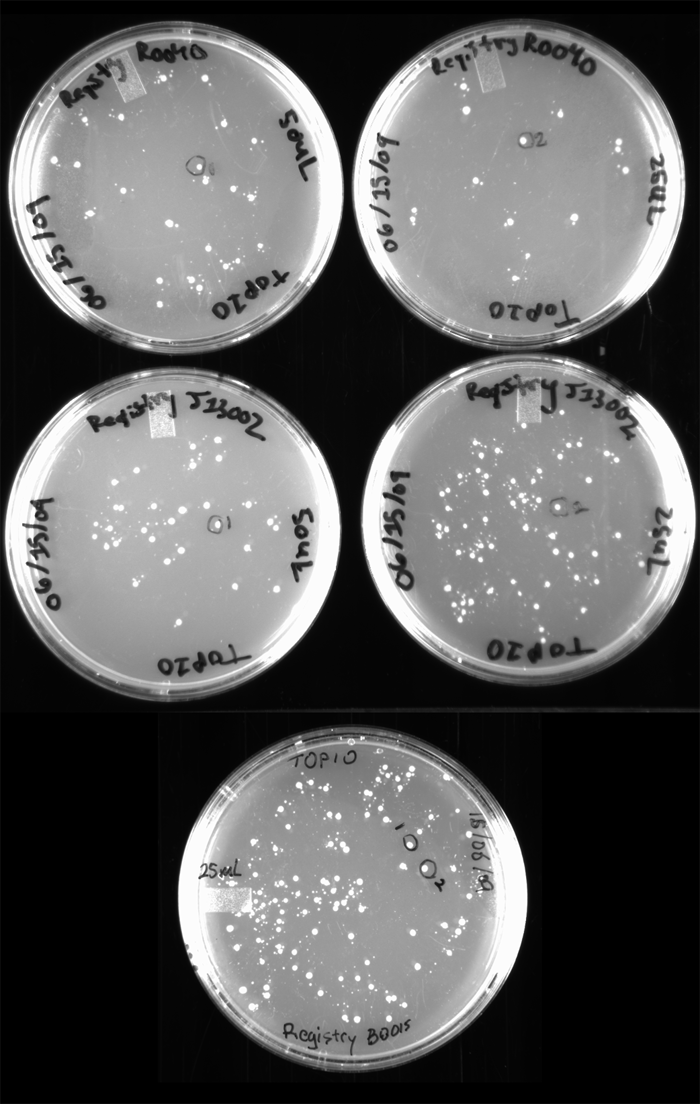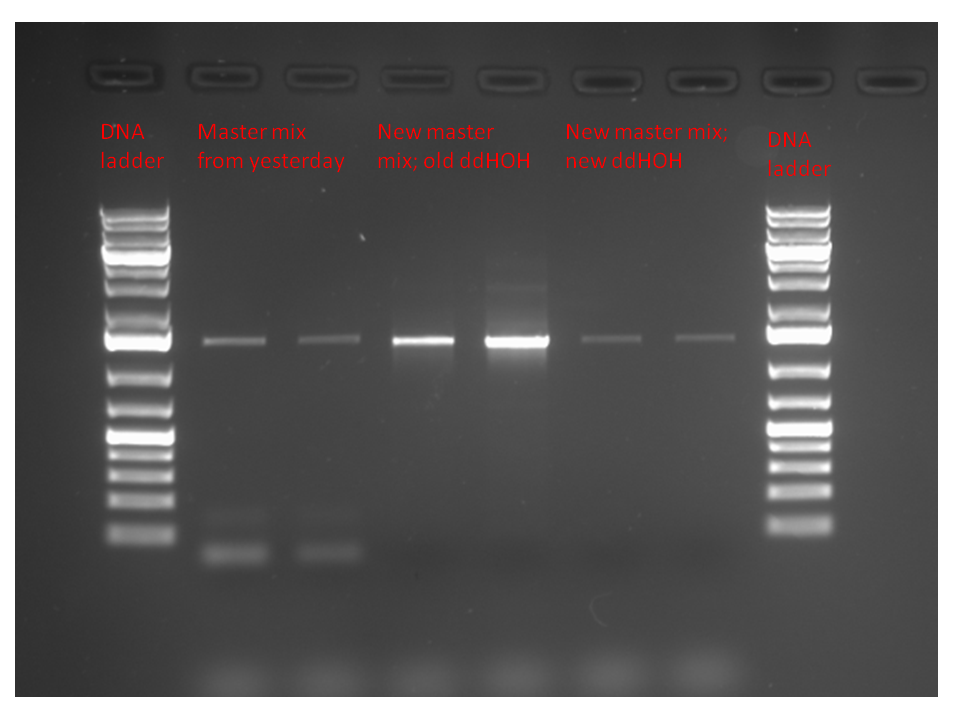Team:Calgary/17 June 2009
From 2009.igem.org

|
CAROL
QuikChange XL Site-Directed Mutagenesis for ''luxCDABE''in TOPO vector
Purpose: To mutate the XbaI site that is located about ~1000bp into the sequence. The reason for mutating the XbaI site for luxCDABE in TOPO vector is because to clone the sequence into a biobrick vector (pSB1AK3 and pSB1AC3), the enzyme, 'XbaI' is required for cloning purposes. Instead of cutting the sequence into two parts, we have to mutate the site so that it only cuts at the end of the sequence properly.
|
|
CHINMOYEE
Research : What is Hill Function ?
Hill function was first used to describe the binding between hemoglobin and oxygen . The Hill function describe the binding affinities between enzymes and substrates.
|
|
EMILY
Transformation of BBK LuxOD47E in psB1AC3
|
|
FAHD
Marketing for June 17th 2009
Today i worked on our iGEM newsletter and wrote up stories for the events that we will be inserting in the newsletter. Events that are to be included wil be our bake sales and our progress in the lab, matlab and second life so far.
I also called some research and biotechnology companies for sponsorship and will do a follow-up with them soon.
|
|
IMAN
Descriptive Title of What You're Doing
WIKI CODING HERE
|
|
JAMIE
Visualization of colony PCR products and plasmid isolation
Figure. 1% agarose gel (100V) for colony PCR of TOP10 transformants using pTaq. Six colonies from each construction techniques were screened. Lane 2-7 are transformants from the EcoRI and PstI construction. Lane 8-13 are transformants from the XbaI and PstI construction. Lane 14 is the negative control. Expected band size was 2kb. Gene specific primers were used. 5μL of GeneRuler 1kb Plus DNA Ladder was loaded. Plasmid isolation of overnight cultures using QIAgen miniprep kit. Elution in 50uL ddH2O.
|
|
JEREMY
Gel of Colony PCR of LuxPQ in psB1AK3
The purpose today was to visualize the colony PCR of LuxPQ in psB1AK3. A 0.8% agarose gel was made to run the LuxPQ in psB1AK3 PCR products. Lanes 3-6 revealed faint bands at ~4,0 kb (the desired size), and the other wells (including the negative control) were clean.
|
|
KATIE
Plan for restriction digest
|
|
KEVIN
Bacterial transformation
|
|
MANDY
Descriptive Title of What You're Doing
WIKI CODING HERE
|
|
PATRICK
Descriptive Title of What You're Doing
WIKI CODING HERE
|
|
PRIMA
Marketing and Newsletter
I began to write up stories on events and conferences from last month to add to our June newsletter. I also helped to pick our sponsor of the month. This month's proud sponsor of the month is BioAlberta! Congratulations!
I also followed up on 8 different companies, 2 of which are considering our project. I'm having difficulties trying to get a hold of some of these staff. I've left voice mails and sent emails with our sponsorship package. I'll continue to follow up throughout the week.
|
|
STEFAN
Descriptive Title of What You're Doing
WIKI CODING HERE
|
|
VICKI
Plasmid isolation of LuxOD47A BBk from the overnight cultures made last night
Purpose: we have lots of competent TOP 10 cells with transformed LuxOD47A BBk on psB1AC3 in overnight plates, restreaks and cultures. The DNA in the overnight culture will be manipulated, but first it needs to be removed from the cells.
Protocol: Plasmid isolation was conducted in accordance with the procedure outlined on the protocol page for Sigma mini-prep kits. The concentrations of the isolated plasmids in ddHOH were measured with the Nanodrop spectrophotometer and placed in the -20 degree C freezer for a NotI restriction digest tomorrow.
Negative control test
Purpose: Contamination appears to be rampant in everyone’s PCR products. This will test our reagents used in PCR master mix and help determine where the contamination is coming from.
Protocol: 3 samples were made: the negative control PCR product from yesterday (already amplified); new master mix with old water; and new master mix with new water. A PCR with pTaq DNA polymerase was conducted in accordance with the procedure outlined on the protocol page. Results: These are shown below. All of the purportedly negative controls are contaminated, including the new master mix made with new ddHOH. This implies that the communal reagents used in the master mix are also contaminated with a sequence that is specific to LuxO primers.
|
 "
"












